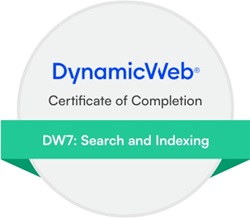Posted on 26/09/2025 11:07:58
Hi
The behavior you’re seeing is expected, based on how data models and data sets are designed to work in Dynamicweb 10 (DW10). Let me explain why, and also what your alternatives are if you need more flexibility.
How data models & datasets work in DW10 — the key constraints
What is a data model / dataset
-
A data model in DW10 is a structure that defines a set of product attributes (fields) — for example, “Vehicle” might be a model that defines attributes like engine size, number of doors, etc.
-
A dataset is a variant under a data model. For instance, under the “Vehicle” data model, you might define datasets like “Honda Civic”, “Honda Accord”, “Mercedes C-Class”, etc. Each dataset can have its own default values, validations, or attribute subsets.
When you assign a product to a data model, the product “inherits” the attributes defined by that model. This is described in the “Data model membership” docs:
“When a product is linked to a data model it inherits the product attributes associated with that model” doc.dynamicweb.dev
Why a product can’t effectively have multiple datasets from the same model
Because of how the system is built:
-
The dataset defines a subset or override of the model’s attribute settings for that product.
-
If you assign more than one dataset under the same data model to a product, there’s a conflict: which dataset’s settings should “win” (which default values, which validation rules, which attribute overrides)? The system is not designed to merge or reconcile two dataset configurations under the same model.
-
In practice, DW10 will “overwrite” one dataset with another (or only show one) because only one dataset can logically apply. In your case, when you assign both “Honda” and “Mercedes” datasets to the same product under model “Vehicle,” you’ll see only one dataset in effect (i.e. the last one, or whichever the system resolves to).
So yes — the behavior of seeing only one dataset is expected given the architectural rules of DW10.
In your forum post you said:
“When I assign both datasets to a single product … only one dataset is visible.” doc.dynamicweb.com
That aligns with the system’s design: one product → one dataset (per data model).
Why your initial structure (“Honda”, “Mercedes” as models) is misaligned
What you described in your message:
“The customer created data models called honda, mercedes etc. The data model for that would be a car and then each dataset would be a honda or a mercedes.”
This is backwards relative to the standard use of models and datasets. Instead:
-
You want “Car” (or “Vehicle”) as the model.
-
Then “Honda”, “Mercedes”, “BMW”, etc. would be datasets under that model (or variants / types).
-
Each product is linked to one dataset under that model (e.g. a particular car instance is either “Honda” or “Mercedes,” not both).
If you treat “Honda” as a model, and then tried to put multiple dataset-likes under it, you’ll hit the same conflict.
What to do if you need cross-model relationships (e.g. “car that is both X and Y”)
If your business requirements demand that a product “plays” in multiple categories or brands (for instance, a product that is both “sport car” and “luxury brand” or a car that spans features from multiple “datasets”), then the built-in dataset mechanism is not suitable for that. Instead, you should use:
-
Product relations
Use related products or linking tables to represent relationships. For example, a "base model" product could have relations to multiple “packages” or “brands” etc.
-
Dynamic relations / references
You can define dynamic relations or reference fields so that a product can reference or link to multiple other dataset-like entities, without “inheriting” them as its own dataset. In other words, your product is in one dataset, but has links (relations) to others.
These approaches let you maintain clean separation of dataset inheritance (only one per product per model) while still modeling multiple associations or classifications.
Feel free to explain what you are trying to achieve and we can provide a way to structure it.
Also reach out - we can do a session with you and our product manager to help get a better understanding of these concepts in DW10.
BR Nicolai













